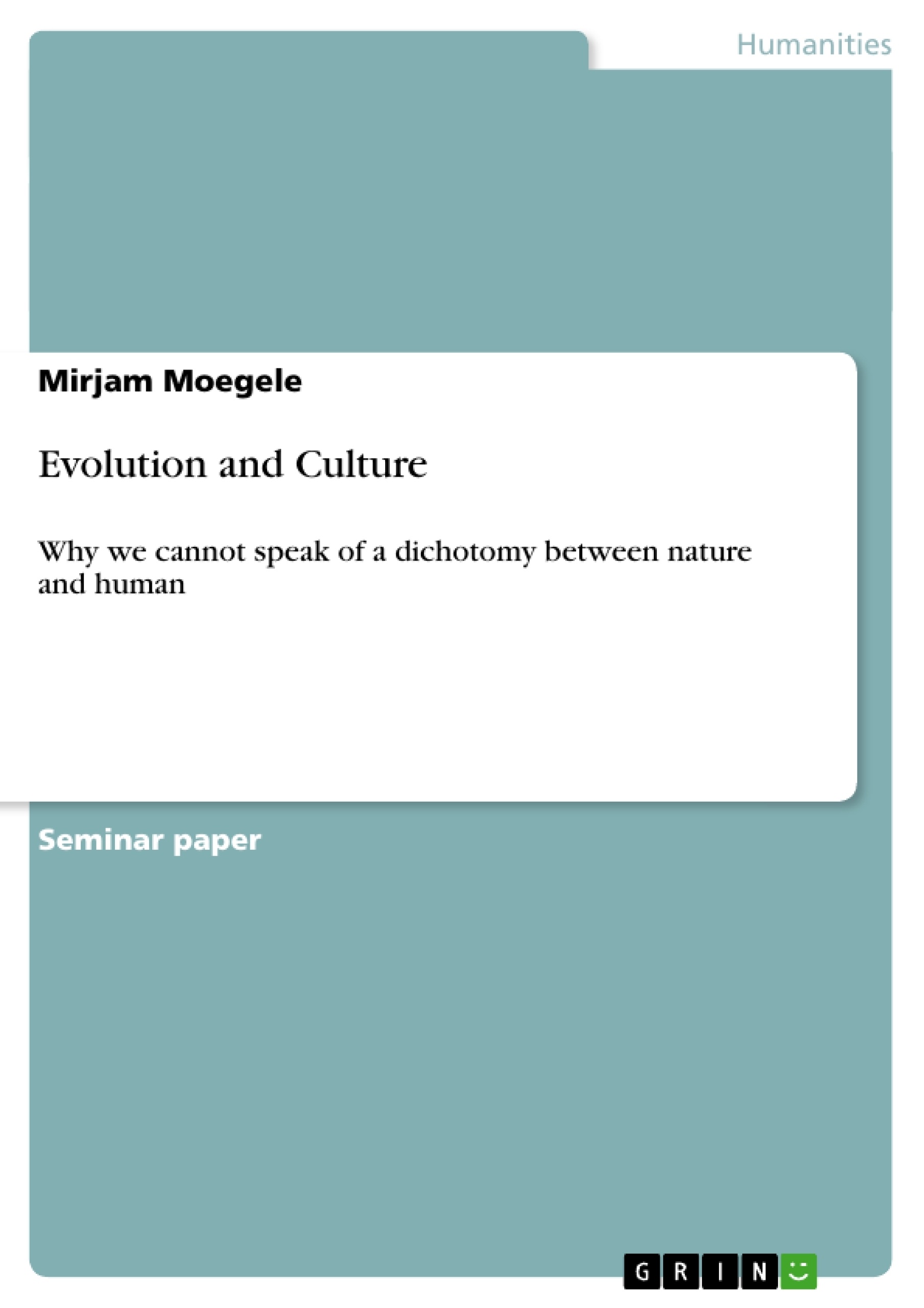The behaviour patterns I was showing above are just examples to mention, that there is a very strong similarity between natural and human phenomena. Important social scientist in early stage of sociology already found that there lies evolution behind the development of societal systems. Spencer and Comte found the concept of organic theory of society and brought first examples for what “social” is form a natural point of view.
Inhaltsverzeichnis (Table of Contents)
- Environment
- Two worlds same behaviour patterns to profit from
- Landscape deformation as survival method
- Stealing
- Migration and mobility
- Reproduction through cloning
- Connecting society and nature
Zielsetzung und Themenschwerpunkte (Objectives and Key Themes)
This paper explores the interconnectedness of nature and human culture, arguing against a strict dichotomy between the two. The author aims to demonstrate that human actions and societal structures are deeply rooted in evolutionary processes and that a clear distinction between “human” and “natural” is impossible.- The Evolution of Social and Technical Behavior
- The Intertwined Nature of Human Culture and Natural Processes
- The Absence of a Distinct “Inhuman” Sphere
- The Role of Evolutionary Theory in Understanding Human Society
- The Interdependence of Human Actions and Environmental Systems
Zusammenfassung der Kapitel (Chapter Summaries)
- The first chapter explores the concept of "environment" and argues that human beings are actively shaping and influencing their surroundings, creating meaning and using resources for survival. It also highlights the interconnectedness of human development and evolution.
- The second chapter investigates various behavioral patterns shared by humans and animals. It examines examples like landscape deformation (beavers and humans), stealing (magpies and humans), migration (birds and humans), and reproduction through cloning (cell division in both humans and other organisms).
- The final chapter discusses the influence of evolutionary theory on understanding societal systems. It highlights the work of Spencer and Comte, who viewed societies as organic systems with interconnecting elements, similar to the human body. This chapter emphasizes the positive connection between humans and their environments, suggesting that solutions to problems often involve understanding their interconnectedness.
Schlüsselwörter (Keywords)
The text focuses on the relationship between nature and human culture, exploring themes of evolution, social behavior, environmental impact, and societal systems. Key terms include: evolutionary theory, organic theory of society, human-natural interaction, landscape deformation, stealing, migration, cloning, cell division, and interconnectedness.
Fin de l'extrait de 5 pages
- haut de page
- Citation du texte
- Mirjam Moegele (Auteur), 2010, Evolution and Culture, Munich, GRIN Verlag, https://www.grin.com/document/147125
Lire l'ebook



